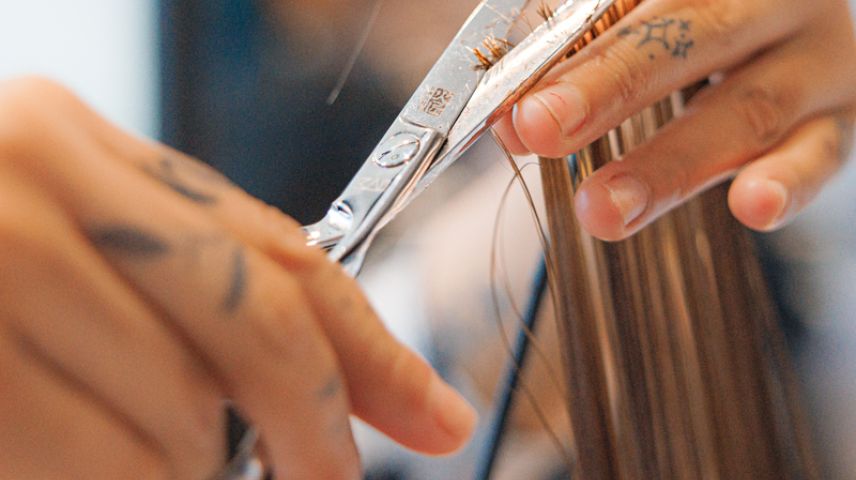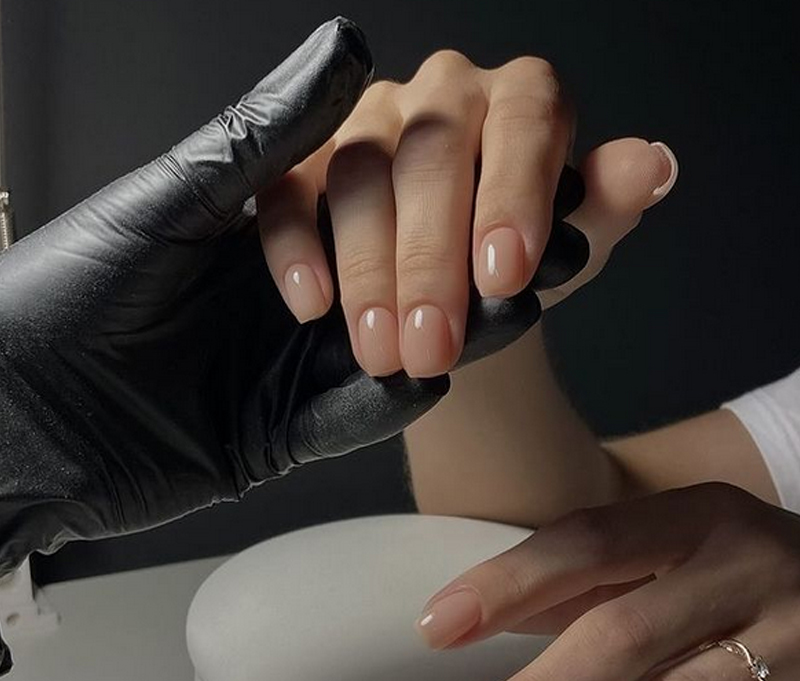Common Nail Issues & Treatments
Are your nails in good condition, or do you see dents, ridges, dryness, and breakage?
Most nail issues are a common problem for lots of people and can be easily avoided through proper nail care, others may indicate an underlying condition that needs attention via a medical professional.
Below, we caught up with Scratch Nail & Beauty Salon owner, Chantal Welvaert to talk about common nail problems and how to fix them, plus tips on how to keep your fingernails in tiptop shape…
Fingernails, what’s okay and what’s not?
Fingernails are composed of layers of protein called keratin, which grows from the base of the nail underneath the cuticle. When nails are healthy, they are smooth, uniform in colour and consistency, and free of pits, grooves, and discolouration.
White Spots
Injury or trauma to the nail can often cause small white spots or lines. These are nothing to be concerned about and do go away as the nail grows out. Common causes to white spots include:
- Nail biting and picking
- Manicures or pedicures
- Using acetone nail polish remover
- Accidents where your nail is trapped in a door or window
Rarer causes of white spots on the nail may be associated with a fungal nail infection and as a side effect of medication or chemotherapy.
Yellow Nails
The most common culprit of yellowing nails is the use of nail polish, especially dark colours. If you paint your nails dark without using a good base coat, then there is a tendency for the colour to cause a subtle yellow stain. A fungal infection, known as onychomycosis, can also cause yellow nails. This usually affects the toenails, but it can happen to fingernails too. If you think you have a fungal infection, it’s best to speak to a doctor.
Horizontal Ridges
Deep horizontal lines, also known as Beau’s lines, that run across your nail may be a sign that you nail growth has slowed or stopped. This could be caused by a minor injury or illness. Other possible causes can include Raynaud’s disease, diabetes, zinc deficiency, kidney failure, thyroid disease, and illnesses that cause a high fever, such as measles, mumps, scarlet fever, and pneumonia.
Brittle Nails
One of the most common nail problems, brittle nails can often be soft, dry, or thin, and they may break easily and start to split. Brittle nails are often a sign of ageing, but they can also be caused by long-term exposure to chemicals like nail polish, washing your hands a lot, which can strip your nails of moisture, and harsh cleaning products we may use around our home. Other factors that may cause brittle nails include pregnancy, anaemia, and thyroid disorders.
Vertical Ridges
Vertical nail ridges are most common in older people, as the production of new cells slows down. Our nails grow as living cells group together and multiply beneath the skin, pushing the older cells out into the thing we recognise as our nail. This renewal process reduces as we get older, causing the nails to grow unevenly. Vertical ridges can also be an indication that your body is lacking something important such as iron, protein, calcium, zinc or even vitamin A. Skin conditions such as eczema and psoriasis can also bring about ridges, as can digestive disorders.
Nail care tips…
- Keep your nails clean and trimmed. Visit a professional salon for regular nail maintenance and care.
- Try not to bite, pick, or tear your nails or the skin surrounding them.
- Wear gloves to protect your fingernails if you regularly use cleaning products, live in cold climates or your hands are often in water.
- Eat a healthy diet that includes high-protein foods like fish, meat, pulses, and nuts. If you eat a varied diet, you shouldn’t require supplements – but people with weak nails may benefit from a nail supplement that contains biotin, B vitamins, zinc and silica.
- Use an acetone-free nail polish remover and avoid pushing your cuticles back. This can lead to breaks in the skin around the nail bed and cause infections.
- Keep fingernails dry and clean. This prevents bacteria from growing under your fingernails.
- Use moisturiser, rubbing the lotion into your fingernails and cuticles, too.
- Apply a protective base coat layer before using nail polish.
- Don’t bite your fingernails or pick at your cuticles. These habits can damage the nail bed. Even a minor cut alongside your fingernail can allow bacteria or fungi to enter and cause an infection.
- Don’t ignore problems. If you have a nail problem that doesn't seem to go away on its own or is associated with other signs and symptoms, consult your doctor or dermatologist for an evaluation.
It's easy to neglect your nails - but taking some basic steps can keep your fingernails healthy and strong. If you start to notice changes to the colour or texture of your nails, including the appearance of dark lines, then it may be a sign of a more serious medical condition, and you should make sure that you speak to a medical professional.
It’s so important that you look after the health of your nail, or make sure you have an amazing nail technician or manicurist that looks after the health of your nails for you.
Depending on your nail problem, treatment may include:
- Antibiotics for bacterial infections.
- Antifungal preparations, mainly oral tablets, for fungal infections in the nails.
- Treatment for any contributing skin disease.
- Advice on appropriate nail care
As a very experienced nail technician with 17 years behind me, I can guide and help my clients if I think they need any of the above. A lot of health problems can be seen in your nails so make sure if you have an issues you go to a manicurist who has a good understanding of nail health.






